In order to avoid unnecessary query on database it is a common pattern to define a cache in application layer to cache the query result from database. See one example below. Here the application cache is maintained in a custom class CacheContext.
public class AccountService1 {
private final Logger logger = LoggerFactory.getLogger(AccountService1.class);
private CacheContext accountCacheContext;
public Account getAccountByName(String accountName) {
Account result = accountCacheContext.get(accountName);
if (result != null) {
logger.info("get from cache... {}", accountName);
return result;
}
Optional accountOptional = getFromDB(accountName);
if (!accountOptional.isPresent()) {
throw new IllegalStateException(String.format("can not find account by account name : [%s]", accountName));
}
Account account = accountOptional.get();
accountCacheContext.addOrUpdateCache(accountName, account);
return account;
}
In Spring there is an annotation @Cacheable which can make the cache managed by Spring instead of application developer. See improved version:
public class AccountService2 {
private final Logger logger = LoggerFactory.getLogger(AccountService2.class);
@Cacheable(value="accountCache")
public Account getAccountByName(String accountName) {
logger.info("in method getAccountByName, querying account... {}", accountName);
Optional accountOptional = getFromDB(accountName);
if (!accountOptional.isPresent()) {
throw new IllegalStateException(String.format("can not find account by account name : [%s]", accountName));
}
return accountOptional.get();
}
In this example, there is no more cache evaluation and cache fill logic. All such stuff are taken over by Spring under the hood and completely transparent to application developer, with the help of following bean configuration in xml:
class="org.springframework.cache.concurrent.ConcurrentMapCacheFactoryBean">
class="org.springframework.cache.concurrent.ConcurrentMapCacheFactoryBean">
And how to research what magic has been done by Spring to achieve this behavior?
We use the following code to research. It is expected that the request sent by line 31 will directly reach database, while the second request in line 34 will be handled by Spring cache handler.
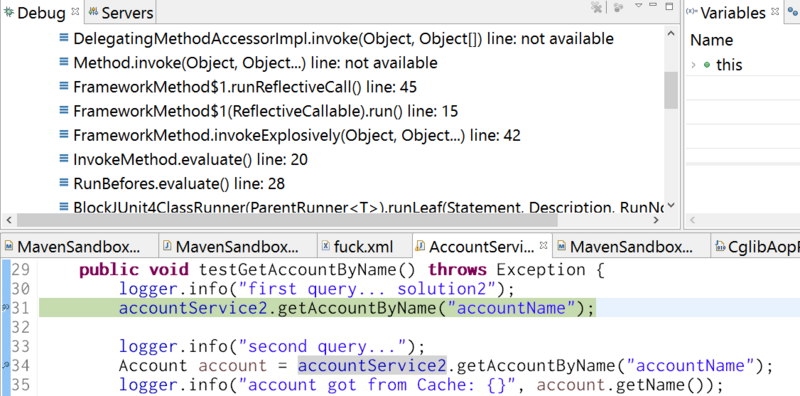
Here in line 31, in debugger we can find that accountService2 is not an instance of application class com.sap.AccountService2, but a dynamic proxy class generated by Spring.

As a result after pressing F5, the intercept method of this dynamic proxy class is called:

In this method, the execution will be delegated to Spring cache handler class:


In example 1, the logic of cache evaluation and fill is done by application, and now it is done in method execute below.
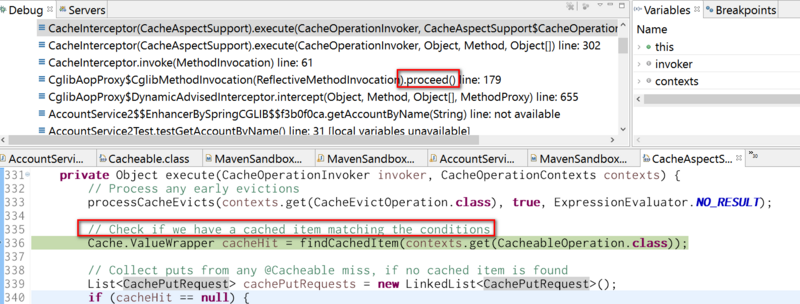
First internal cache managed by Spring is checked in line 336 via method findCachedItem. Due to expected cache miss, our application method will be called as usual via reflection, as demonstrated below:

After application method to retrieve account from database is done, the result, Account instance with id 2495 is filled to Spring cache, the variable contexts below.
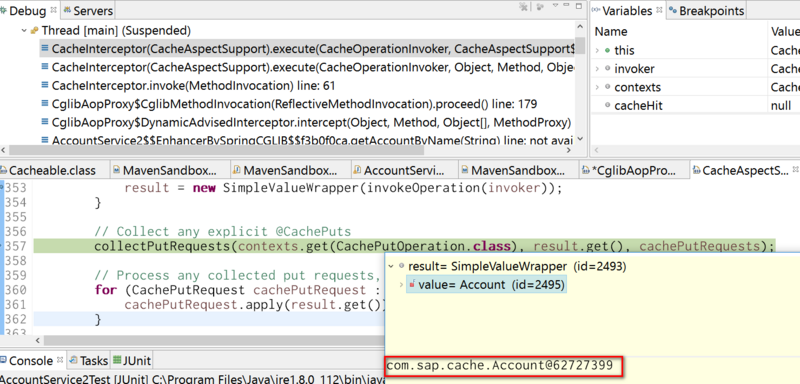
Below is the screenshot for Spring internal cache to store application data, which is based on ConcurrentHashMap. Our cached Account instance with id 2495 could be found there.
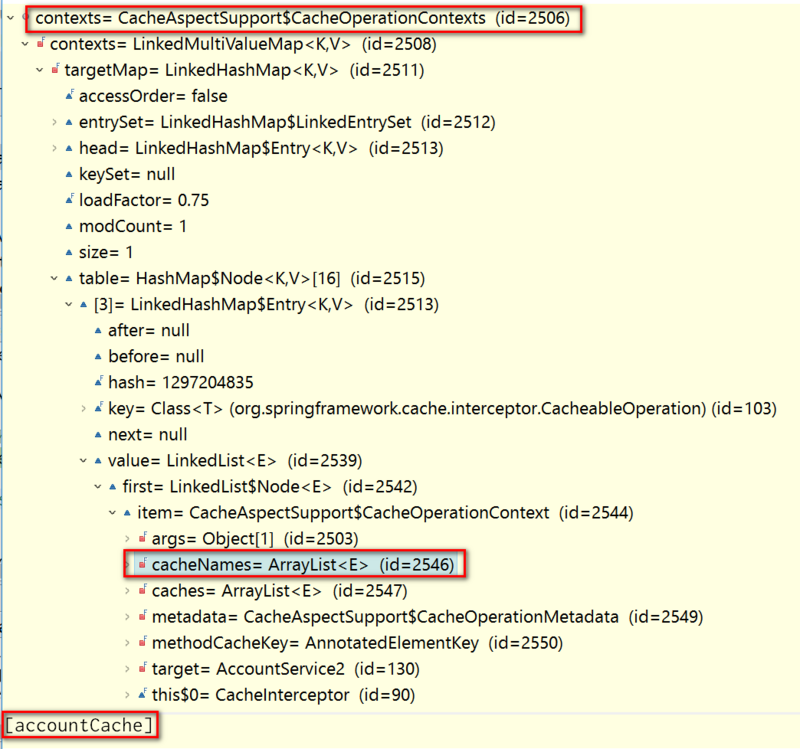
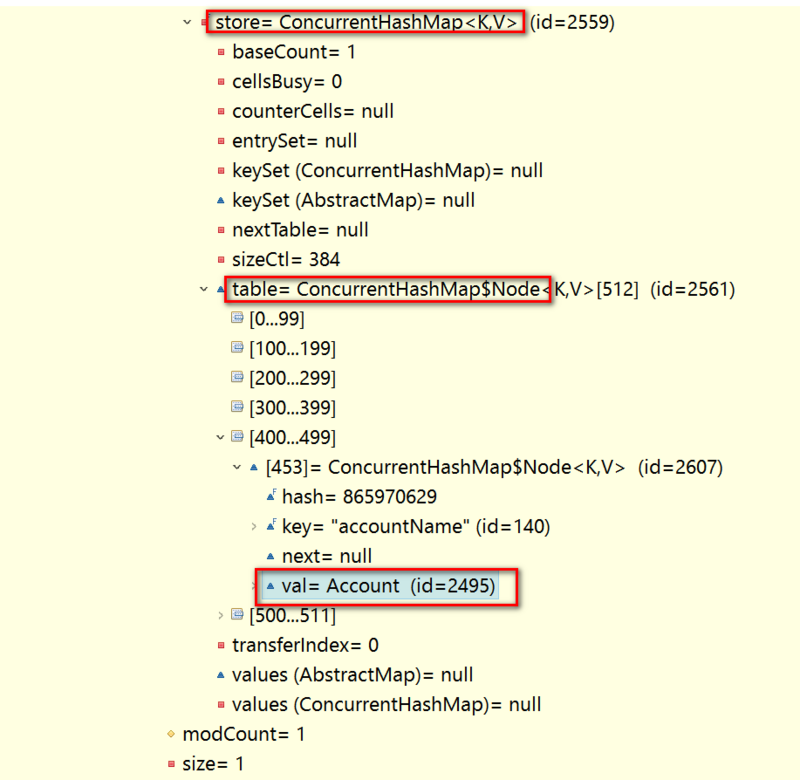
For the second query request issued by application, the cached result will be returned by Spring handler:
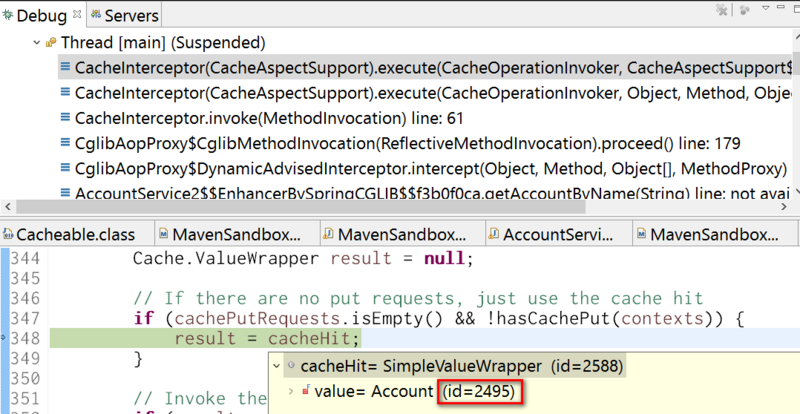
The last question is, how and when the dynamic proxy is generated?
Again let’s go to the entry point of Beans initialization:
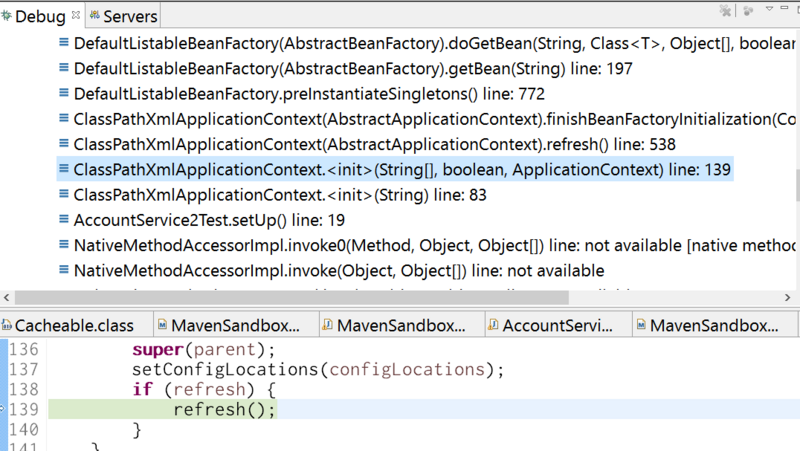
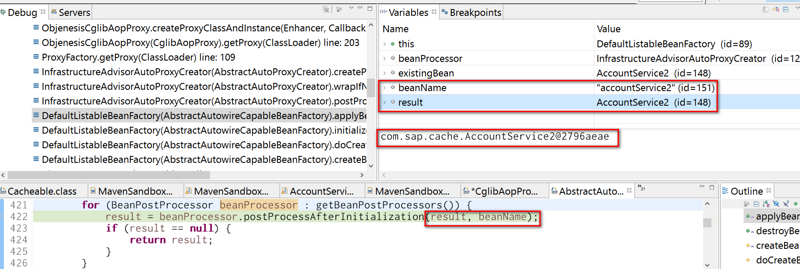
Here the dynamic proxy is created based on configuration defined in xml with the help of CGlibAopProxy. For more detail about CGlibAopProxy, please refer to Spring official document.
要获取更多Jerry的原创文章,请关注公众号"汪子熙":
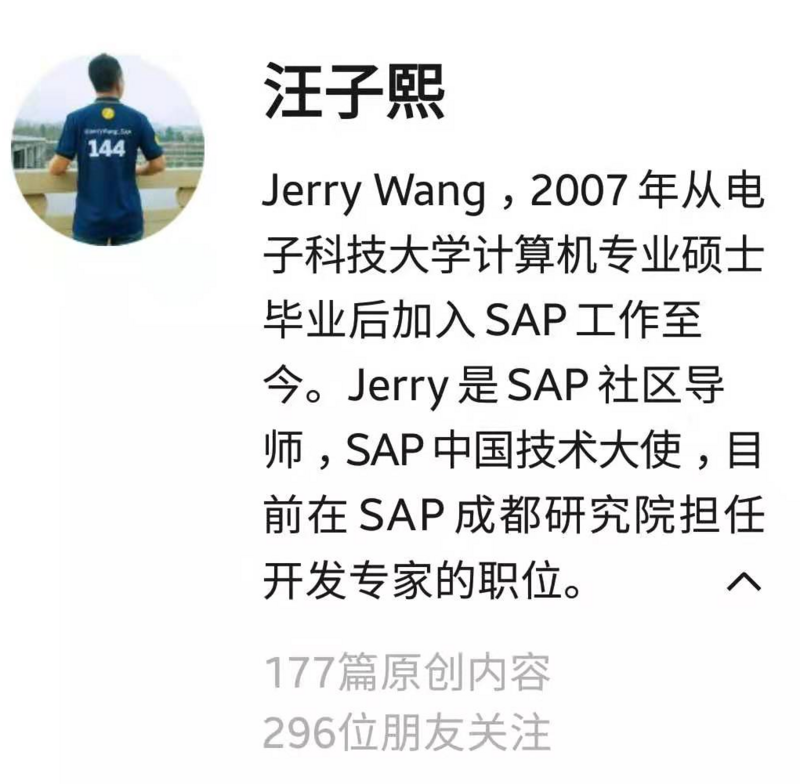




















 4375
4375











 被折叠的 条评论
为什么被折叠?
被折叠的 条评论
为什么被折叠?








